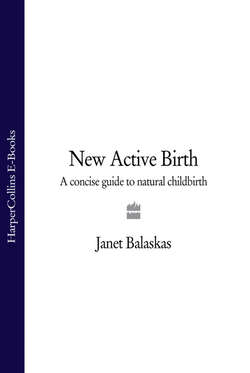Читать книгу New Active Birth: A Concise Guide to Natural Childbirth - Janet Balaskas - Страница 5
Foreword
ОглавлениеHere is an important voice in childbirth. Janet Balaskas is speaking to those women who want to grow in self-awareness and to use their bodies actively in labour. In her childbirth classes Janet Balaskas stands for activity rather than passivity, for movement rather than immobilisation and a woman’s right to choose whatever position she finds comfortable throughout labour and delivery.
The teaching in this book is revolutionary. Yet it is age-old. All over the world and throughout recorded history women have chosen upright positions to give birth and it is only we in the West who have had the extraordinary notion that a woman should lie on her back with her legs in the air to deliver a baby.
But to get women upright is to do much more than help them find a comfortable posture. It is to turn them from passive patients into active birth-givers. It is to challenge the whole obstetric view of birth in Western society. This is based on the assumption that childbirth is a medical event which should be conducted in an intensive care setting. The whole pregnancy is seen as a pathological condition terminated only by delivery. The modern high-tech obstetrician actively manages labour with all the technology of ultrasound, continuous electronic monitoring and oxytocin intravenous drip. Many obstetricians have never had the opportunity to see a truly natural birth. To turn the process of bringing new life into the world into one in which a woman becomes simply the body on the delivery table rather than an active birth-giver is a degradation of the mother’s role in childbirth.
We are now beginning to discover the sometimes long-term destructive effects on the relationship between a mother and her baby and on the family, of treating women as if they were merely containers to be relieved of their contents and of concentrating attention on a bag of muscle and a birth canal, instead of relating to and caring for the person of whom the uterus and the vagina are a part.
‘Bonding’ is a fashionable term today. In many hospitals special time is devoted for bonding and there must be few midwives and obstetricians who would not claim that they consider bonding important. But everything that happens after delivery is the outcome of what has gone before. Bonding is either spontaneous and easy, or made virtually impossible by the atmosphere at delivery and by the care a woman is given as a person, not merely a ‘para 1’, an elderly primigravida, a maternal pelvis, a contracting uterus or a dilating cervix.
The way we give birth is important to all of us because it has a great deal to do with the kind of society we want to live in, the significance of the coming to birth of a new person and a new family.
When we hand over responsibility for choosing between alternatives on the basis of what we believe to be right, we hand over responsibility for the quality of the society we, and our children, must live in.
Sheila Kitzinger
